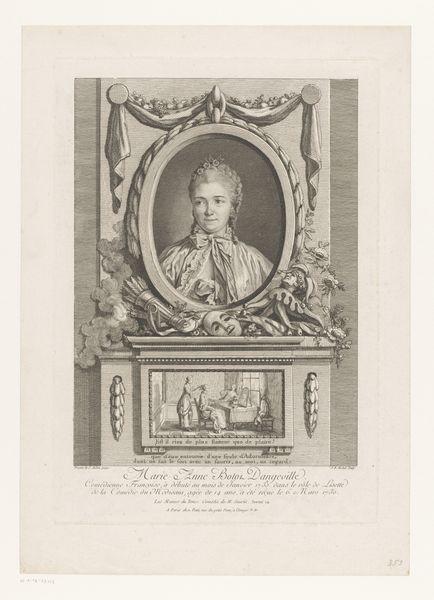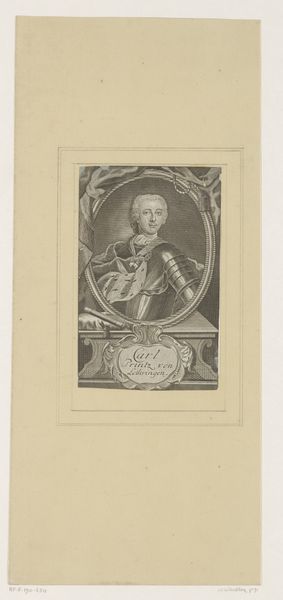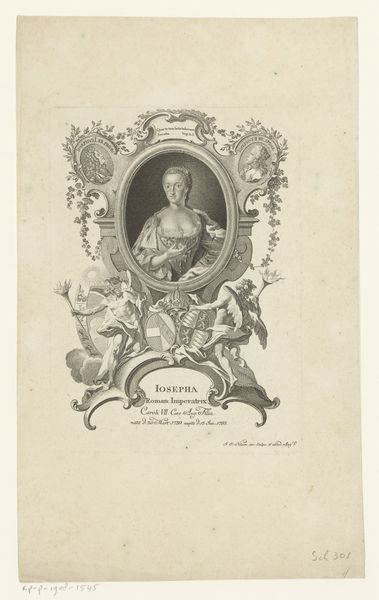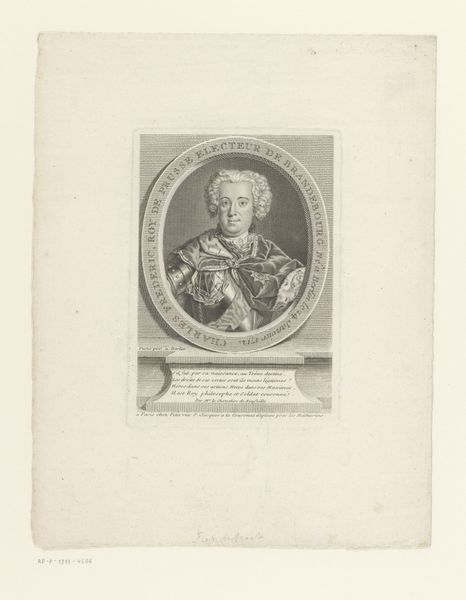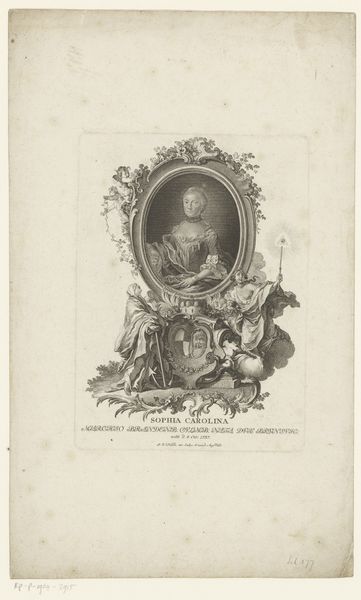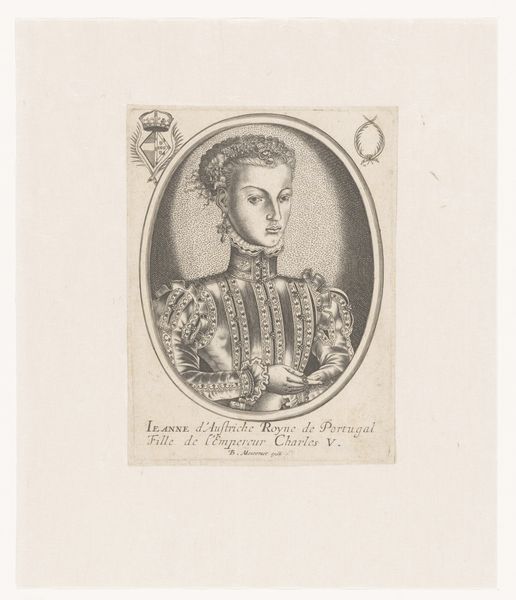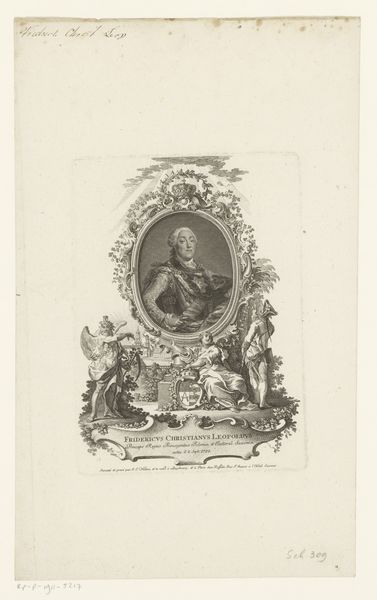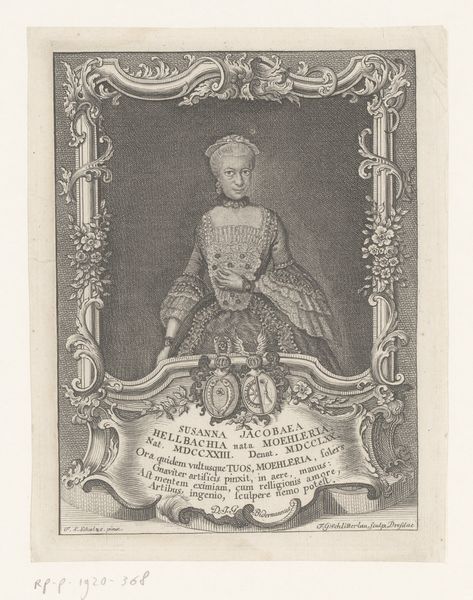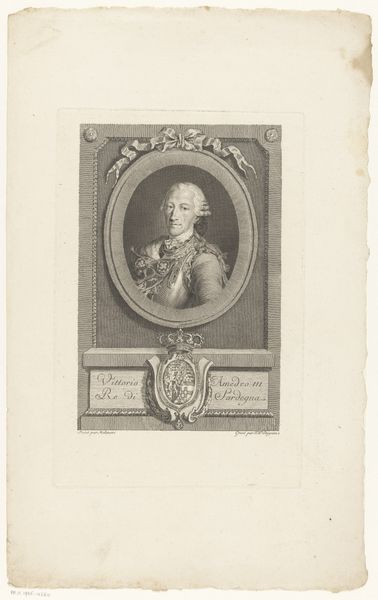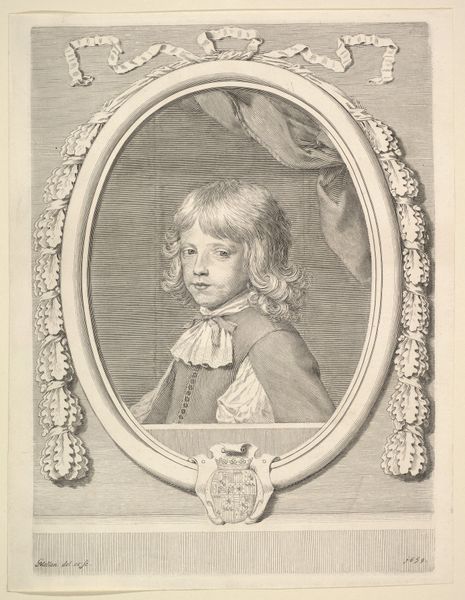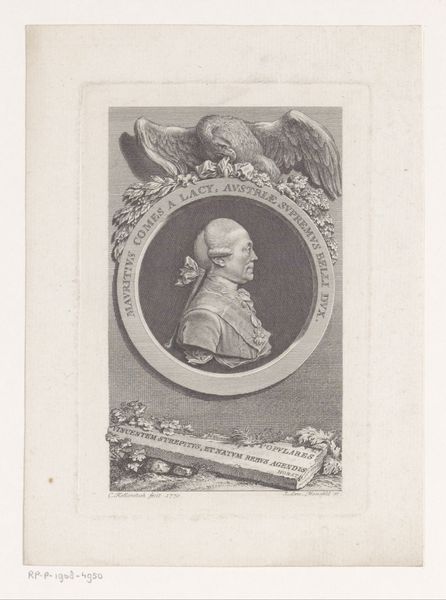
drawing, print, engraving
#
portrait
#
drawing
# print
#
old engraving style
#
line
#
history-painting
#
engraving
Dimensions: Sheet: 9 13/16 × 6 3/16 in. (24.9 × 15.7 cm)
Copyright: Public Domain
Curator: This is Robert Hicks's "Mary, Queen of Scots," an engraving created in 1829. Editor: It’s remarkably detailed, especially for a print! The gray scale creates a melancholy mood. She appears as if encased in a memory or relic of her turbulent past. Curator: The details are definitely intriguing! The rendering of Mary carries echoes of both power and vulnerability. Look at how Hicks framed her portrait—almost enshrining it—with allegorical figures representing the arts and sciences above and a trophy of arms below. To the iconographer, that implies her place in history as both a ruler and a patron of culture. Editor: Enshrined, perhaps, but also caged. It reads like a justification or even a romanticization of her plight. I'm interested in what feels deliberately excluded from view, namely, any of the real political and religious tensions surrounding her reign, her execution. This makes her palatable, maybe even innocent? Curator: Certainly. It's about cultivating a specific image. It almost looks as though she is canonized! Notice the halos around the small sculptural figures above her framed portrait? Hicks has created a representation of the queen as a symbol, as a figure of tragedy and romance. I also note that at this time there was a considerable taste for Romanticized notions of tragic history. Editor: Exactly. And that’s precisely where the potential problem lies. To reduce her story to "tragedy and romance" risks diminishing the complexities of the Scottish Reformation and Mary's active role in it. Does it make viewers complicit to admire her this way, forgetting about the religious civil war that tore Scotland apart? Curator: But doesn't Hicks give us a cultural object imbued with many layers of meaning? This isn't simply a portrait but an object laden with historical, emotional, and even propagandistic symbolism that remains potent centuries later. Editor: True, it serves as a potent reminder of how historical narratives are constructed, interpreted, and, at times, manipulated. Even today! Curator: So, in that sense, the image can be seen to hold considerable importance and intrigue even today. Editor: I'd say we can move on armed with caution as critical viewers.
Comments
No comments
Be the first to comment and join the conversation on the ultimate creative platform.
